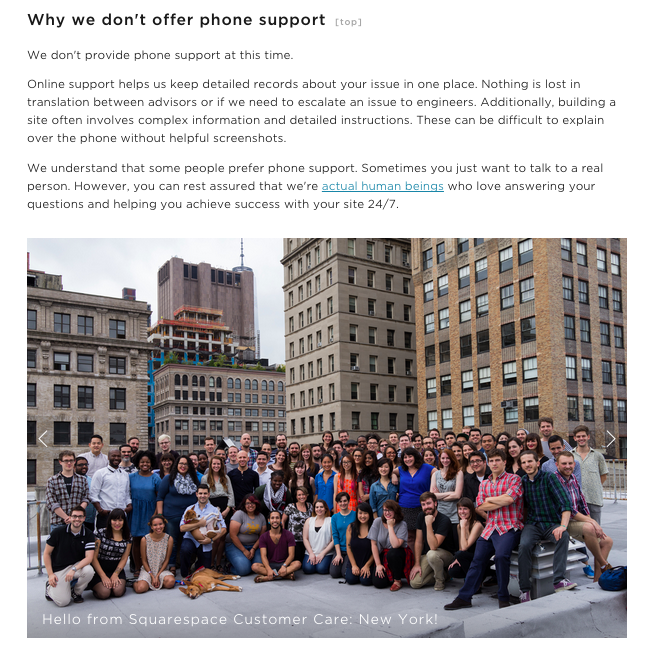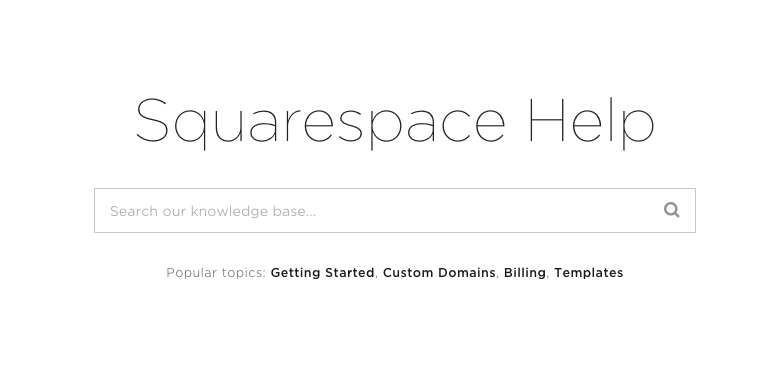What if I told you that you could take your support phone off the hook, and there would be no consequences? Wait, wait… don’t do it now!
Recent articles have suggested that phone support at SaaS companies is more important than ever. I believe this ignores the reasons customers call for help in the first place. The fact is, most customers wouldn’t blink if you remove your phone and direct them to a great support site.
Most of us picture a typical tech support rep of the ’90s, wearing a headset, telling you what they can’t do from within a dimly lit cubicle. These call centers were the golden standard of support at a time when there was no other way to connect with a customer remotely.
Fortunately, customers’ channel preferences have changed since then – and so have their options. Forrester released a report this year found that more customers try to find a solution online first before turning to the phone.
With more customers avoiding the phone, fewer companies are offering phone support. Cost per contact on the phone support is expensive! Even worse, phone support can leave resolutions open to interpretation (as my dad would say, always get things in writing!), and detailed tech advice is usually best given in diagrams and screenshots.
With all this stacked against it – are you ready to ditch the phone line?
How Squarespace cut the (phone) cord
Squarespace is a drag-and-drop platform that enables anyone, individuals or businesses, to build beautiful web or e-commerce site. They’ve built a customer base that ranges from the tech-immersed to laymen – and they’ve managed to do so without phone support
This decision wasn’t made lightly. Before removing a phone number, they carefully weighed the online customer experience against their phone support experience. It’s true that a picture says a thousand words – as anyone who’s tried to describe a specific button to a customer over the phone can confirm. “No, sorry…. little up – over to the right. No, the one that looks like a gear, or a cog? Like settings?”
Squarespace’s support team confirms this:
“Online support helps us keep detailed records about your issue in one place. Nothing is lost in translation between advisors or if we need to escalate an issue to engineers. Additionally, building a site often involves complex information and detailed instructions. These can be difficult to explain over the phone without helpful screenshots.”
To address any potentially frustrated users, they’ve posted the following empathetic statement on their support site:

There’s no doubt that Squarespace has invested in helping customers help themselves. Their knowledge base is extensive, well-designed and easy to navigate. There are still live chat and email options with quick response times, but the message is clear: get help online.

By removing phone support, Squarespace has been able to successfully scale a consistently high-quality support experience across their customer base.
Moz and Wistia have also found success in cutting their phone lines (read their explanations direct from them here and here). Shifting to online support was more scalable for them too, while providing a better experience for support agent and customer alike.
Are you ready to quit phone support?
Gut check time: will not having phone support be feasible for your business? Before taking the scissors to the cord, there are a few things to check first.
Do you deal with extremely time-sensitive support issues?
Of course all support requests need to be answered quickly. However, some services involve revenue dependant support issues. For example at Payfirma, product issues could take down an entire restaurant’s payment system and prevent them from taking credit or debit cards. It was not okay to leave customers in this position without a direct 24/7 support phone line.
Are solutions easily accessible elsewhere?
Please don’t leave your customers stranded. They should have at least two other options for reaching solutions, whether guided by a support agent, or through a knowledge base. If customers are not able to self serve or use other channels (social, chat, email) – you’re not ready to cut the cord quite yet.
How much do you charge for your service?
Enterprise level products come with higher expectations. If your product costs a company tens of thousands of dollars to run each year, you may want to provide them with a direct line to your support team (or at least a customer account manager). T-Mobile recently rolled out a custom support line for business customers with more than 50 phone lines. This is an excellent move. Not only does the revenue from these enterprise customers justify the need for such bespoke service, the complexity of massive inbound call centers requires personalized support at a moment’s notice.
Who is your customer?
If you sell dentures, perhaps your customers would be more comfortable using the phone than Twitter (or maybe not!). If your customers are low income or don’t have easy access to the Internet, again, phone lines may be more convenient for them.
I’m ready to hang up the phone – what’s next?
If the questions above reassured you that you’re ready to quit phone support, or if you just want to phase out phone support gradually, here are the next steps for you.
1. Research your top customer requests
Categorize the most common requests you are receiving over the phone and identify articles or product solutions that would prevent these calls. You can do this by tagging tickets with both the product and the “driver” of the call (the problem that caused the customer to contact support).
2. Build a comprehensive support portal
Using the information collected in step one, prioritize and develop the knowledge base articles needed to reduce call volume.
3. Start directing customers to self-service
When customers call in, follow up with an email and a link to the appropriate self-service article. They’ll catch on that they can find everything they need in your knowledge base!
4. Hide your phone number a little
Keep your phone number on your website – but it’s ok to keep it a little hidden. By funneling customers to self-service before showing a phone number, you’ll get fewer calls overall, and mostly from the ones who really need it.
5. Enjoy your extra time
Keep track of your success by documenting the number of calls you are getting, and the traffic to the support center. Repeat from step 1 to continue optimizing your self-service offerings and reducing the number of times a customer must pick up a phone to call you.
What if your customer keeps requesting phone support?
How do you respond to customers when you are no longer offering phone support? Great question! In formatting your response (which you should use as a saved reply or macro), you want first understand why you don’t. There are two reasons:
- If you offer an extra channel, you’ll provide a poorer experience all round, so other channels like email, Messenger, and social, you won’t be as quick to respond and the quality of your support could be at risk of dropping.
- Requests for help are generally too complex to have that conversation over the phone. For Kayako, a better alternative is using TeamViewer for screen sharing. We might offer callbacks if a case seems like it would be easier to schedule in rather than engaging in the constant back-and-forth.
With that in mind, your saved reply or macro should look something like what Recruiterbox are telling their customers:
Hi [Customer],
Our primary mode of support is via email. Please don’t think this means we don’t want to speak to you — quite the opposite, actually!
We’ve found we can give our highest quality of support when we focus our efforts on email. This setup also allows us to pass on useful things such as links to help articles, screenshots, and step by step workflows—which you can then refer back to again in the future! We hope you’ll find the same as well.
Thanks,
Support Agent
A final word on quitting phone support
I’ve worked both in support centers with no phones, and where 80% of support volume comes through a phone. Sometimes, picking up a phone and calling a customer when they aren’t expecting it is the most rewarding experience.
They get personalized service, and you have a chance to understand and connect with your customer further. Even if you are able to quit phone support, don’t forget the real reason support exists – to make your customers day a little easier and a little brighter – regardless of channel.
[hs_action id=”9087″]

